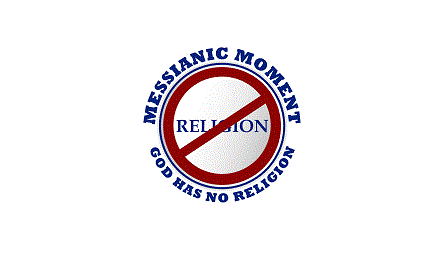If you prefer to watch a video, click on this link: Watch the video.
As we continue in Vayikra (Leviticus), God gives the orders and commands regarding the daily offerings, specifically the wholly burnt, meal, guilt, peace and thanksgiving offerings.
The procedure and requirements for anointing of the Priests and the Cohen haGadol (High Priest) are given, and Aaron and his sons are anointed by Moses.
There are so many different things we could discuss in these few chapters, but since in this year (2018) Passover falls next Friday night, I would like to talk about the Passover lamb and its significance in the sacrificial system.
Yeshua (Jesus) has been referred to as the “Passover Lamb” for centuries, and His sacrifice is the means by which we are able to be absolved of our sins, so why is He called a “Passover” lamb? The lamb sacrificed on Passover was not a sin sacrifice.
We are told the requirements for the 5 different types of sacrifices outlined in Leviticus; by definition, Yeshua’s sacrifice was a Thanksgiving, or Peace sacrifice. We know this because only the peace sacrifice was eaten by the one bringing the sacrifice. In all the other forms of sacrifice some of the animal was given to the Priest as his compensation, with the remaining parts either burned on the Altar or removed and thrown away. Only the Peace sacrifice was also shared with the one bringing the animal.
Yeshua’s sacrifice was a sin sacrifice, and also served as a Passover sacrifice; in fact, His sacrifice fulfilled three sacrifices: peace, sin and wholly burnt. Of course, His body wasn’t consumed by fire, but His entire body was sacrificed (which is what was done with the wholly-burnt sacrifice.)
The wholly burnt sacrifice represents our complete devotion to God- no question that Yeshua was completely devoted to His Father in heaven.
The sin sacrifice is the means by which we are forgiven our sins when we do T’shuvah (repentance) and ask God for forgiveness (now by means of Yeshua’s sacrifice.)
The peace offering is how we enter into communion with God by sharing the meal made from the sacrifice, which we do at the Passover Seder.
Can you see how Yeshua’s once-and-for-all sacrifice accomplished all three types of sacrifice? Through our acceptance of Yeshua we can show our complete devotion to God, receive forgiveness of sins and enter into communion with God.
Does this mean we shouldn’t call Yeshua the “Passover Lamb” anymore? I think it is still appropriate to refer to Him that way, just as it would also be appropriate to refer to Him as the Yom Kippur goat.
Personally, I prefer to use “lamb” other than “goat” when I refer to Yeshua, although from a technical perspective either would be correct.
For those that will celebrate the Holy Days of Passover and Hag ha Matzot, I pray you thoroughly enjoy this festive festival. I am always afraid I will accidentally eat something with yeast during the week of this festival, and have done so, once or twice, in the past. I hope it is easier for you to keep away from leavening than it is for me (I just LOVE bread!)
Donna and I have different people to our Seder every year, and we usually try to have Gentile friends who have not enjoyed this Holy Day. Every single couple we have shared our Seder with, for nearly 20 years now, has enjoyed it and it has helped them to get closer to their Jewish roots.
I may be a week early, but…Chag Sameach!
